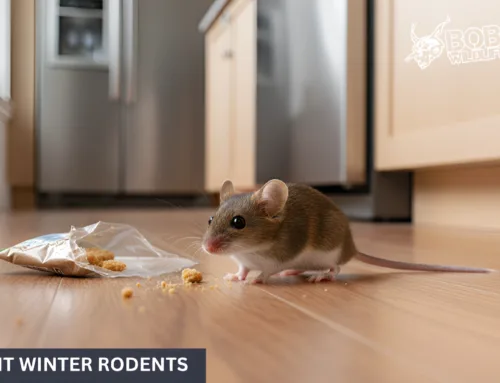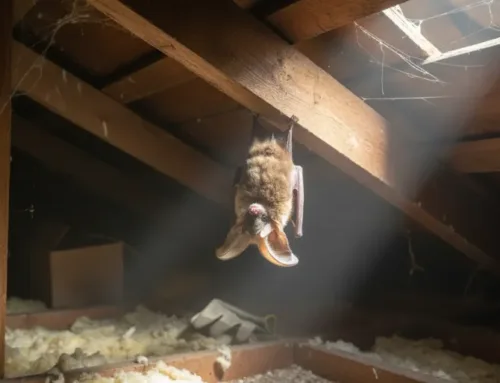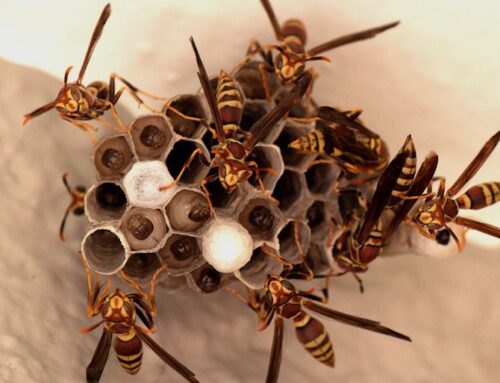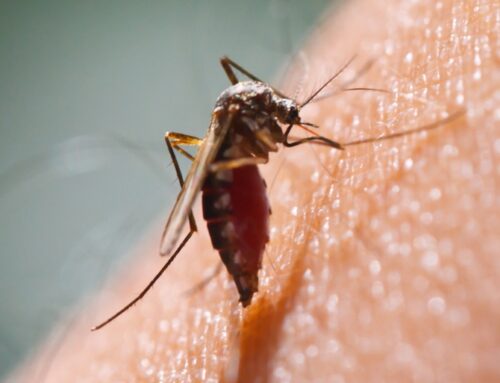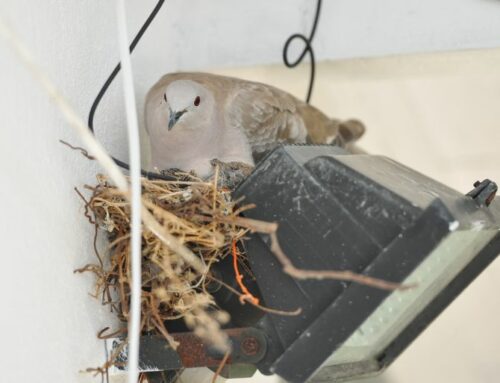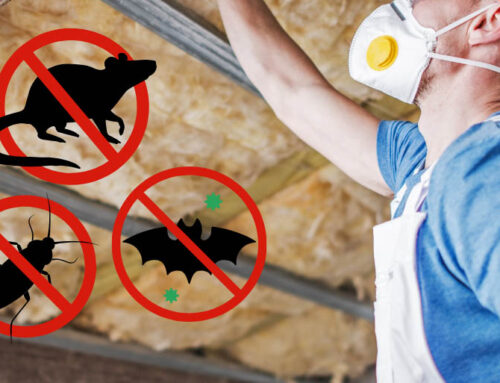When fall arrives in Des Moines, it’s not just cooler weather that moves in — it’s also the season when mice start looking for warmth, food, and shelter.
Even small gaps or crumbs left out can invite them inside, and before long, that quiet scratching in the walls can turn into a full infestation.
Fortunately, preventing mice in your home doesn’t have to be complicated. With the right fall pest control steps and a few quick inspections, you can keep them out for good.
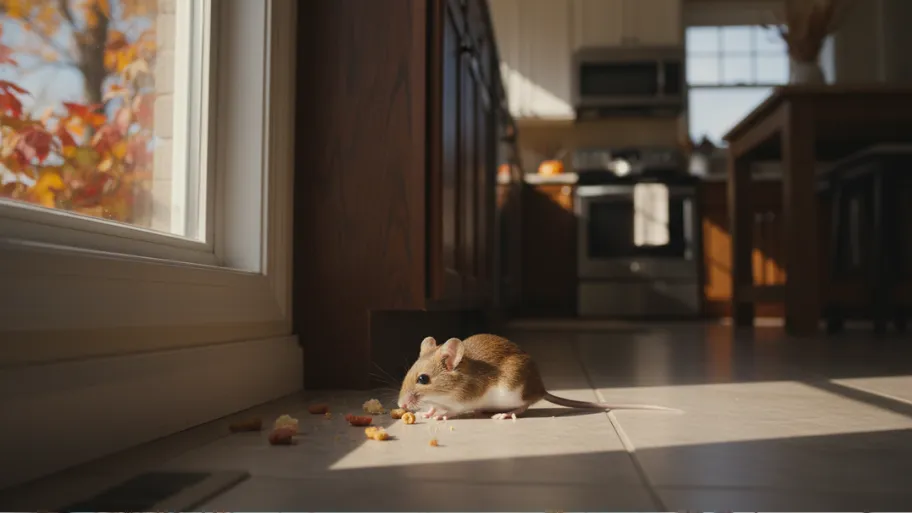
At Bobcat Wildlife & Pest Management, our Des Moines team has helped countless homeowners seal entry points, remove attractants, and safeguard their homes before winter hits.
Here’s what really works — and when it’s time to call in a professional.
What You’ll Learn About Keeping Mice Out:
- Quick Answer — What Actually Keeps Mice Out This Fall
- Early Warning Signs You May Already Have Mice Indoors
- Where Mice Usually Hide in Des Moines Homes
- 5 Expert-Backed Tips to Keep Mice Away From Your Home This Fall
- Why Fall Is the Time to Act
- When to Call a Des Moines Mice Removal Expert
- Quick FAQs Homeowners Ask in Fall
Quick Answer — What Actually Keeps Mice Out This Fall
If you’ve started noticing droppings or scratching sounds, don’t panic — most fall mouse problems begin small and can be stopped fast with a few simple steps.
Here’s exactly how to keep mice out of your house before the problem grows.
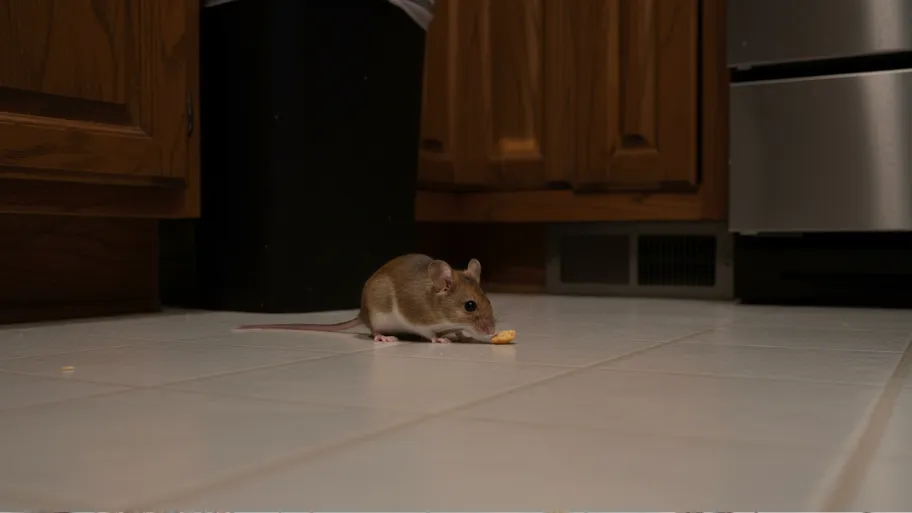
1. Seal every gap or crack.
Mice can squeeze through surprisingly small spaces — even gaps you might overlook around doors, vents, or plumbing lines. A little caulk or steel wool goes a long way in keeping them out.
2. Store food securely and clean up crumbs.
Keep grains, pet food, and snacks in airtight containers. Wipe counters, sweep floors, and empty trash regularly — even a few crumbs can attract mice.
3. Tidy up inside and out.
Clear out cluttered storage areas, and trim shrubs or piles of leaves around your home’s foundation. The fewer hiding places available, the less appealing your home becomes to rodents.
These small actions add up quickly. But if you’re still hearing noises or finding signs of activity, Bobcat Wildlife & Pest Management can inspect your home, seal hidden entry points, and set up a prevention plan that keeps mice out for good.
Early Warning Signs You May Already Have Mice Indoors
Even if you’re careful about sealing and cleaning, mice can still sneak in when the weather cools — and often, they stay hidden until small clues start to appear.
Spotting the early signs helps you act fast before they multiply or cause damage. Here’s what to watch for inside your home:
Seeing one mouse doesn’t mean your home is unclean — it just means they found an opening and took advantage of it. Acting early makes a big difference, since a single pair can produce dozens of offspring in a few months.
If any of these signs sound familiar and you’re wondering how to get mice out of house safely and permanently, the experts at Bobcat Wildlife & Pest Management can help.
Our Des Moines team inspects, seals, and removes mice using safe, proven methods before nesting season peaks — so your home stays protected all winter.
Where Mice Usually Hide in Des Moines Homes
Once you start spotting signs of mice, the next step is knowing where to look. Mice don’t roam randomly — they follow warmth, food, and safety.
Finding their favorite hiding spots early can make fall pest control much easier.
In Iowa homes, especially around Des Moines, the white-footed mouse tends to settle in warm, quiet areas that are close to food or insulation. Some of the most common hiding places include:
Knowing where to look is half the battle in effective fall pest control. A quick visual inspection of these areas once or twice each season can help you spot early activity — before mice spread to other parts of your home.
If you’re unsure where they’re getting in or need a thorough inspection, Bobcat Wildlife & Pest Management can locate and seal every hidden entry point using safe, proven methods tailored to Des Moines homes.
5 Expert-Backed Tips to Keep Mice Away From Your Home This Fall
Now that you know where mice tend to hide, it’s time to take simple steps that make your home a lot less inviting.
These methods are effective, quick to do, and designed for Iowa homes during cooler months.
Whether you prefer DIY prevention or professional help, here’s how to keep mice out this fall.
1. Seal Cracks and Gaps to Keep Mice Out
The first step in how to keep mice out is stopping them from getting in at all. Mice can squeeze through gaps you might overlook — around vents, pipes, doors, or foundation lines.
Check both inside and outside your home for small openings and seal them using steel wool, caulk, or metal mesh.
Homes in Des Moines often have small gaps near basement windows or siding that mice use as entry points during fall.
If sealing feels tricky or you’re unsure where they’re getting in, Bobcat Wildlife & Pest Management’s exclusion service can locate and close off those hard-to-reach spots safely and effectively.
2. Store Food and Pet Supplies Properly
One of the easiest tricks for how to keep mice away is to eliminate what draws them in — food. Keep cereals, snacks, grains, and especially pet food in airtight containers instead of open bags.
Even small crumbs or an uncovered bowl of pet food overnight can attract mice looking for an easy meal. Regularly wipe counters, sweep floors, and take out trash before bedtime to remove temptations.
3. Keep Your Home and Yard Clean
Keeping your yard less inviting can also help with keeping bats away from your home:
We get it — Iowa fall cleanup can be a chore, but it’s one of the best defenses against nesting mice and other seasonal pests.
4. Try Natural Ways to Keep Mice Away
If you prefer gentle options, there are several ways on how to keep mice away naturally using items you probably already have at home.
Try placing peppermint oil, cloves, or vinegar-soaked cotton balls near entry points, under sinks, or behind appliances. The strong scent can help discourage mice from settling in those areas.
These methods work best as deterrents — they help prevent activity but won’t remove mice that are already nesting. Still, they’re a good layer of protection to pair with regular cleaning and sealing.
5. Use Traps or Call in a Professional
If you’re already dealing with an active problem, understanding how to get mice out of house safely and quickly is key.
Standard traps work well for catching a few mice, while enclosed capture traps are a good choice if you want a humane approach to removal.
However, if you continue hearing noises, finding droppings, or catching mice repeatedly, it’s time to call a professional.
The Bobcat Wildlife & Pest Management team provides humane, targeted mouse removal for Des Moines homes — sealing entry points and keeping your home protected long after the traps are gone.
Why Fall Is the Time to Act
There’s a reason pest professionals call autumn the most important season for prevention. As the weather cools across Iowa, mice begin searching for warm places to build nests — and once they find one, they’re hard to remove.
Most Des Moines infestations begin between late September and November, when outdoor temperatures start to drop and food becomes scarce.
That’s when mice move from garages and sheds into walls, basements, and kitchens, often unnoticed until winter sets in.
Acting early with consistent fall pest control keeps your home protected before they settle in.
Sealing gaps, inspecting storage areas, and keeping things tidy now will save you the stress, noise, and damage that come from dealing with a full infestation later.
When to Call a Des Moines Mice Removal Expert
Sometimes, even after sealing gaps and keeping your home spotless, mice still manage to find their way in. When that happens, it’s time to call for professional help.
Reach out to a mice removal expert if:
Our Des Moines specialists understand how local white-footed mice behave — where they enter, what attracts them, and how to stop them at the source.
With professional exclusion techniques and safe removal methods, we can eliminate activity quickly and help prevent it from coming back.
If you’re still trying to figure out how to keep mice out of your house, Bobcat Wildlife & Pest Management offers humane, effective Mice Removal Services across Des Moines.
From inspection to long-term prevention, our team ensures your home stays mouse-free all season long.
Quick FAQs Homeowners Ask in Fall
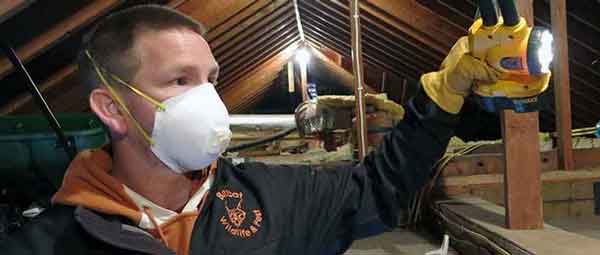
About the Author
Gene Spaulding, Owner and Founder of Bobcat Wildlife & Pest Management, has been at the forefront of pest and wildlife control since 2008. With over 17 years of hands-on experience, Gene combines his expertise and passion to deliver effective and humane pest management solutions to homeowners and businesses across the Des Moines Metro area. Guided by the motto “Your Property, Our Priority,” Gene ensures that Bobcat Wildlife & Pest Management remains a trusted partner for comprehensive pest and wildlife services.

